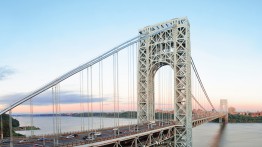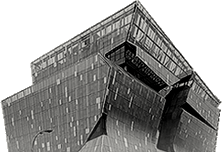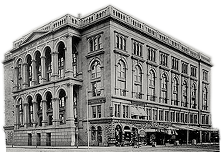COOPERMADE TRANSPORTATION
With President Biden’s announcement of Gateway, a $292 million project to build an additional railroad tunnel under the Hudson River, COOPERMADE turns its attention to some of the many Cooper alumni who have designed, built, restored, and maintained transportation systems around the country.
Richard Sarles CE’67
To describe Richard Sarles’ career in transportation requires a veritable history of the advances in rail service in the northeast over the past forty-five years. Sarles, who graduated from The Cooper Union in 1967 with a degree in civil engineering, has had a direct hand in projects from the introduction of the Acela to the Northeast corridor to creating the transit industry’s first fatigue prevention standards.
That last was a part of his five-year tenure as General Manager and Chief Executive Officer of the Washington Metropolitan Area Transit Authority (WMATA). When he took that post, which he held from 2010 until his retirement in 2015, he was inheriting a system that was facing serious budgetary and safety concerns after a 2009 fatal crash on one of the city’s subway lines. Besides drafting the all-important fatigue prevention standards, he created WMATA’s first system safety plan.
In 2007, Sarles, who had spent many years as a transportation engineer working in construction, planning and project management, became executive director of New Jersey Transit (NJT). As he told a senate panel in 2009, the company had inherited a mix of rail lines, bus routes, and infrastructure in various states of disrepair from different private entities, primarily the Erie Lackawanna system. Over the years, the company had to create a coherent system out of these disparate elements, so much of Sarles’ work was dedicated to keeping the system in a state of good repair and expanding the company’s services. That included procuring locomotives that let commuter trains from non-electrified New Jersey rail lines go directly into Manhattan, opening a light rail service in southern New Jersey, and overseeing extensions of several other light rail systems. Sarles, who has received a Cooper Union Presidential Citation in 2011 and the CUAA Gano Dunn Award in 2018, was also a tireless advocate for a much-needed new tunnel under the Hudson, a project which has recently received federal funding.
Before his New Jersey Transit tenure, Sarles was Vice President at Amtrak where he introduced the highspeed Acela line for the region and electrified the railroad for the first time between New Haven and Boston.
When he retired from the WMATA, his colleagues tried to persuade him to stay: after all, he’d quickly improved the Washington system after the calamitous 2009 accident and was overseeing the extension of that city’s Silver Line. But Sarles, almost 70 at the time, chose to focus on his family. U.S. Representative Gerald E. Connolly summed up his low-key style: “He was a buttoned-down workhorse who restored confidence in the system after a very rocky run.”
Aviva Oppenheim ME’02
According to Aviva Oppenheim, a Cooper engineering education is an ideal training for life as a Port Authority engineer. “It really prepared me for my work: at Cooper you’re in a community with really smart people, out-of-the-box thinkers,” she said in a recent interview, adding that class work problem-solving was often a group effort. The same can be said at her job where high stakes projects must be considered from every vantage point. “The best thing to do is to put us all into a room, have a discussion, and really learn from each other’s expertise. At Cooper I learned to appreciate that approach.”
Access to a Port Authority brain trust certainly behooved Oppenheim whose most recent project, upgrading a new cashless toll-collecting system, covered every crossing under the agency’s aegis, from the George Washington Bridge down to the Holland Tunnel, west to the Goethals, and all other toll points in between. This past December, the Lincoln Tunnel became the last to deactivate its toll booths and switch to the cashless system. Oppenheim and her team installed overhead gantries to capture tolling information, a system it took years to complete. Now drivers can continue driving without the need to decelerate, stop, and remerge with traffic each time a toll is collected. Last year, she was one of 13 agency employees who received the 2022 Pillars of the Port Authority Awards for her work on the project.
Of course, such a large-scale project required a great deal of discussion with a host of stakeholders. The Port Authority, says Oppenheim, takes its role as a good neighbor in the metropolitan area seriously. “We really have to know and understand the communities where we work.”
Oppenheim has brought her engineering expertise to her own community in Fair Lawn, New Jersey, when her synagogue needed a new mechitza, a partition separating men and women. It’s a project that provokes a lot of passion because there are numerous factors to consider, not least of which is how well it accommodates women’s access to religious services. According to a Port Authority story about Oppenheim, other synagogues looking to renovate their mechitza have reached out for her advice.
An added perk of the job? Her daughter and two sons’ reaction to driving under the hardware that records passing traffic on one of the many roads where the new cashless toll system has been installed: “We’re going under mom’s gantry!”
Phillip Eng CE’83
For Phillip Eng, who served as the president of MTA Long Island Railroad from 2018-2022, the role seemed tailor-made for a native Long Islander who dedicated his entire career to transportation engineering. When he took on the post at the country’s busiest commuter railroad, he said that the job was more than solving engineering problems: “It’s a people job,” he told Newsday in 2018, “and we need to keep a focus on our riders and a focus on the communities that live around the railroad.”
Eng, who stepped down from the post last year to work as a transportation consultant, led the LIRR through the Covid-19 pandemic and delivered a historic on-time performance record by introducing new technologies to modernize the system, including new applications for fare payment and testing new signaling systems.
He began his career at the New York State Department of Transportation where he learned all aspects of the field by working with projects related to design and construction, bridge inspection, structures, and maintenance. He was eventually named Executive Deputy Commissioner of the NYSDOT where he improved methods for executing high-impact projects such as the new Kosciuszko Bridge, the I-81 Environmental Impact Study, and the Rochester Train Station.








